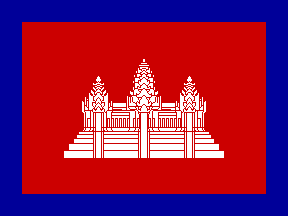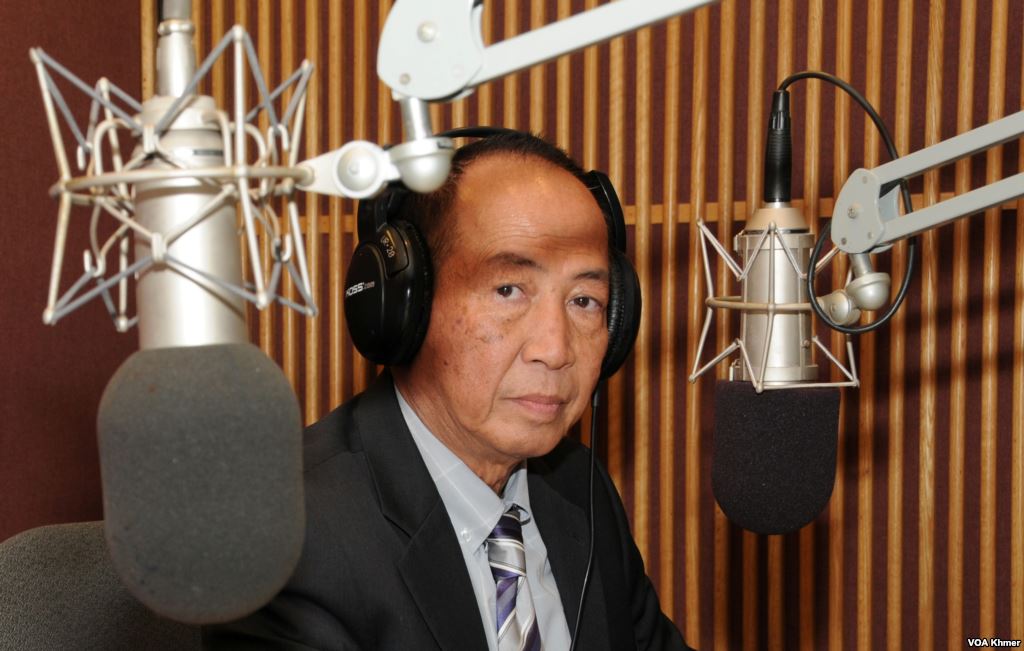On March 12, 1945, King Norodom Sihanouk proclaimed an independent Kingdom of Kampuchea ( changing the official name of the country in French from Cambodge to Kampuchea) following a formal request by the Japanese. Shortly thereafter the Japanese government nominally ratified the independence of Cambodia and established a consulate in Phnom Penh. Sihanouk’s decree did away with previous French-Cambodian treaties and he pledged his newly independent country’s cooperation and alliance with Japan.

The new government did away with the romanisation of the Khmer language that the French colonial administration was beginning to enforce and officially reinstated the Khmer script. This measure taken by the short-lived governmental authority would be popular and long-lasting, for since then no government in Cambodia has tried to Romanise the Khmer language again. Other changes included the reinstating of the Buddhist lunar calendar.
On 12 March 1970, the CIA Station Chief told Washington that based on communications from Sirik Matak, Lon Nol’s cousin, that “the (Cambodian) army was ready for a coup”.
On March 12, 1972 Prince Sisowath Sirik Matak stepped down as “Prime Minister-delegate” acting for Lon Nol.
On March 13, 1970, the Cambodian government requested the withdrawal of all North Vietnamese troops from Cambodian territory. Sirik Matak cancelled Sihanouk’s trade agreement with North Vietnam, Lon Nol closed the port of Sihanoukville to the North Vietnamese and issued an impossible ultimatum to them: all PAVN and Viet Cong forces were to withdraw from Cambodian soil within 72 hours (on 15 March) or face military action.
On 14 March 1972, Lon Nol became the first (and only) President of Cambodia.
On 14 March 2013, the appeals court overturned Beehive Radio station owner/opposition political figure Mam Sonando’s 20 year conviction on anti-state charges, finding that there had been no evidence to convict him. The court instead gave Sonando a five-year suspended sentence on charges that he had been involved in unrest in Kratié province.

On March 15 (or 16), 1969, President Nixon approved the mission to bomb North Vietnamese targets in Cambodia- formally designated Operation Breakfast–at a meeting of the National Security Council. This mission and subsequent B-52 strikes inside Cambodia became known as the “Menu” bombings. On 16 March, Nixon at a meeting at the White House summoned Kissinger, Laird, Rogers and Wheeler to announce that he decided that bombing Cambodia was the “only way” to make North Vietnam compromise because he felt he had “to do something on the military front…something they will understand”.
On March 15 1992, Yasushi Akashi (from Japan) became Special Representative of the Secretary-General and Chief of Mission of the United Nations Transitional Authority in Cambodia (UNTAC). UNTAC became operational on March 15 and deployed 1,500 civilians, 16,000 military staff and 3,600 police in addition to several thousands of Cambodian staff. UNTAC mission began on March 16.

On March 16 or 17, Sirik Matak finally swayed Lon Nol to remove Sihanouk from the government. Lon Nol, who until that point may have been merely hoping that Sihanouk would end his relations with North Vietnam, showed some reluctance to take action against the Head of State: to convince him, Sirik Matak allegedly played him a tape-recorded press conference from Paris, in which Sihanouk threatened to execute them both on his return to Phnom Penh. However, the Prime Minister remained uncertain, with the result that Sirik Matak, accompanied by three army officers, finally compelled a weeping Lon Nol to sign the necessary documents at gunpoint.
On March 17, 2018, hundreds of Cambodian and Chinese soldiers began a 15-day joint military exercise in central Cambodia- ‘Golden Dragon’.
On March 18 1969, on secret orders from Nixon and Henry Kissinger, the U.S. Air Force carried out the first bombing raids over Cambodia of Operation Breakfast- beginning the wider Operation Menu air campaign.
On March 18, 1970, the army took up positions around the capital, and a debate was held within the National Assembly under In Tam’s direction. One member of the Assembly (Kim Phon, later to be killed by pro-Sihanouk demonstrators in Kampong Cham) walked out of the proceedings in protest, though was not harmed at the time. The rest of the assembly voted unanimously to invoke Article 122 of the Cambodian constitution, which withdrew confidence in Sihanouk. Lon Nol took over the powers of the Head of State on an emergency basis, while the position itself was taken by the President of the General Assembly, Cheng Heng. In Tam was confirmed as President of the Sangkum. The removal of Sihanouk had, therefore, followed essentially constitutional forms rather than being a blatant military takeover. These events marked the foundation of the Khmer Republic.

On March 18 1972, controversial figure Son Ngoc Thanh became Prime Minister for the second time.
March 18, 1973, Pech Kim Luon, a “disaffected air force captain,” stole a plane and dropped bombs on Lon Nol’s compound. 43 military dependents were killed, mainly children.
On March 18, 1977, Bophana is 25 when she is executed by the Khmer Rouge. Her body is thrown into the mass grave of Choeung Ek. On the same day her husband Ly Sitha is killed as well. During the five months of torture before her death, she writes thousands of pages of confessions. She tells how her father, a teacher and district chief, was killed in a Khmer Rouge ambush, and how she had to flee her home and take refuge with her two sisters in Kompong Thom. STORY
